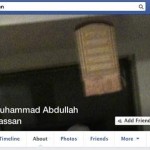John T. Booker: 5 Fast Facts You Need to Know
Another U.S. citizen is accused of trying to perpetrate a terror attack on American soil in the name of ISIS. That man is 20-year-old Topeka, Kansas, resident John T. Booker who also likes to go by Muhammad Abdullah Hassan. Back in April 2014, Booker was first accused of having desires to carry out a terror attack in the U.S., after those accusations, his family told the media that he was in a mental health facility.
Here’s what you need to know:
1. He Wanted to Kill People With Power Using a Sword
According to the U.S. Attorney’s Office, Booker had planned to explode a car bomb at the Fort Riley army base in Kansas.This was a sting operation with the attorney’s office assuring the public there was never any real threat. He had rented a storage unit in Topeka that he used to store explosive devices. In the complaint, Booker allegedly told an FBI informant that he never intended to kill army privates but rather, people with power. He wanted to do this by using a sword or small gun. The documents state that two of Booker’s jihadist confidantes were FBI informants. He bragged to those informants about his “capture” by the FBI in 2014 for his terroristic threats. One of the FBI’s men on the inside posed as a “high ranking sheik” who wanted to commit a terrorist act in the U.S.
You can read the full complaint against Booker above.
2. He Had Been Scheduled to Begin His Basic Training in the Army on April 7, 2014
A Fox News report detailed that Hassan enlisted in the U.S. Army in February 2014 and was scheduled to begin basic training on April 7, 2014. Hassan was on a delayed entry program. According to army officials, he never displayed any anti-American sentiment during the recruitment process. He was discharged from the service last week when army officials learned of his plans. Hassan is being hunted by the FBI and the 902d Military Intelligence Group at Fort Leavenworth.
3. He Once Wrote on Facebook ‘I Am Going to Wage Jihad & Hope That I Die’
This photo was posted on Muhammad Abdullah Hassan’s Facebook on February 23 2014.
Through postings on Hassan’s Facebook page, beginning on February 23, he posted al-Qaida propaganda materials. There are also photos of Osama bin Laden and a video of the 9/11 mastermind reciting the Quran. On March 15, Hassan posted:
Oh those of the ummah of the Prophet Muhammad(S). I will soon be leaving you forever so goodbye! I am going to wage jihad and hope that i die. I want to be with my lord so bad that I cry but I will miss you guys I am not going to lie. I wish I could give you guys more but I am just a guy who is so very poor.
I am telling you I am so broke that my pockets are sore:) I cannot wait to go the Prophet Muhammad’s(S) door and prank Isa bin Maryam and party so hard that it will rock Jannah to its core. Only Allah knows what the future has in store so that should make you fear Allah much much more.
4. He Volunteered for a Children-in-Need Charity in Topeka in 2012
According to his Facebook page Muhammad Abdullah Hassan from Topeka, Kansas, he went to Topeka West High and the Flint Hills Job Corps. His favorite restaurant is the Orange Leaf Topeka.
John Thomas Booker Jr. graduated from Topeka West High School in 2012. A Topeka Capital Journal article from December 2011, details a group of Topeka West Army Jr. ROTC cadets who were volunteering for a children-in-need program. A Cadet Master Sgt. John Thomas Booker Jr. told the paper how much he enjoyed helping the less fortunate saying “I can’t have a good Christmas if they don’t.”
5. Yesterday, a Convicted Wisconsin Pedophile Was Arrested for Trying to Join ISIS
This comes a day after authorities announced the arrest of Joshua Ray Van Haften, a Wisconsin man who is accused of going to Turkey with the goal of joining ISIS in Syria. The Justice Department says 34-year-old Joshua Ray Van Haften spent over a year in Egypt touring the country’s military sites and later traveled to Turkey to find “brothers” who would funnel him into Iraq or Syria. Agents allege that he frequently spoke to his roommates about jihad and once lectured an 11-year-old boy about the coming World War III.
Federal agents arrested Van Haften on April 8 at Chicago’s O’Hare airport after he arrived “in custody” on a flight from Turkey. “We hope this arrest will serve as a deterrent for others who may be terrorist sympathizers here in Wisconsin, across the nation or abroad,” said FBI Special Agent in Charge Robert J. Shields Jr. “They will be held accountable for support of terrorism against our citizens and our international partners.”




